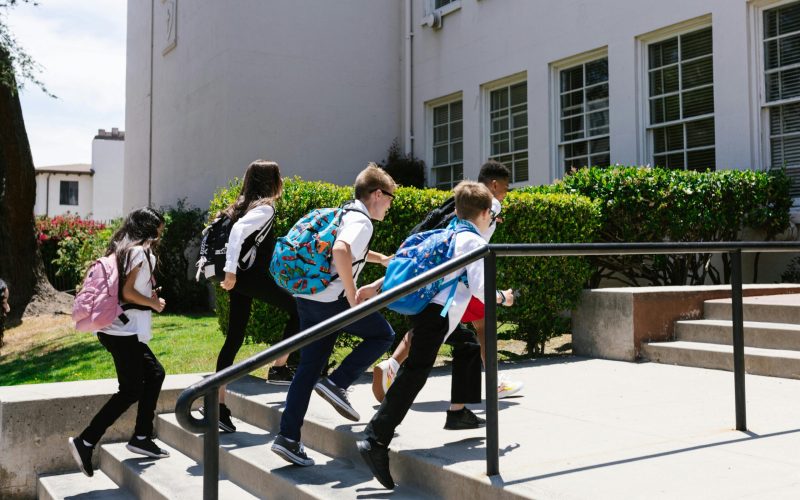By Ryan T. McGuire, Woodnick Law Clerk
When COVID-19 lockdowns began in March 2020, child welfare agencies noticed a significant decline in child abuse reports. [1] But did child abuse actually drop during the pandemic? Unlikely.
Data from Arizona’s Department of Child Safety (DCS) reveals a telling pattern. In June 2024, the agency received 2,756 abuse reports across the state of Arizona. By September 2024, that number had jumped to 4,172 reports. [2] This increase in reports raises a critical question: why do reports spike when school starts?
The answer does not necessarily lie in increased abuse but could be linked to an increase in detection. When schools reopen, mandatory reporters regain daily contact with at-risk children. Teachers, counselors, and school staff serve as primary detectors for child abuse. This post examines the mandatory reporting statute and why schools play such a vital role in child protection.
Understanding Mandatory Reporting Laws
Arizona law requires certain professionals to report suspected child abuse and imposes legal consequences for failing to do so. Arizona Revised Statute § 13-3620 establishes these mandatory reporting requirements. [3] Healthcare professionals, teachers, police officers, members of the clergy, parents, and anyone responsible for a child’s care or treatment must report suspected abuse, neglect, or non-accidental injury. Reports should include the child’s identifying information, the nature and extent of injuries (if any), and any relevant details about the cause. These reports must be made immediately by phone or electronically to police, the Department of Child Safety, social services, or tribal authorities for Native American children.
The statute provides immunity from civil and criminal liability for good-faith reports. Medical and psychiatric records, if applicable, must be provided to investigators upon written request.
A mandatory reporter under the statute who fails to report can be charged with a misdemeanor or a felony, if the unreported incident involves a serious crime (such as incest or child sex trafficking). See A.R.S. §§ 13-3620(O), (P)(4).
Why Reports Increase When School Starts
Often, there is a sharp increase in reports after a child returns to school as they are more regularly seen by mandatory reporters, such as teachers and educational staff. And what about other mandatory reporters, such as doctors and dentists? Parents involved in child abuse cases often skip routine medical appointments and switch doctors often. [4] They may minimize their children’s interactions with potential mandatory reporters through various means: frequent moves, irregular school attendance, avoiding medical care, or choosing educational arrangements that limit outside oversight. [5]
The consistent exposure to mandatory reporters due to compulsory education laws has the collateral effect of ensuring that teachers get a chance to check on the children. This means that teachers and school staff (such as a school counselor and nurse) have regular access to students for approximately seven hours daily, five days per week, which creates opportunities for detection of abused or neglected children. Additionally, teachers and staff are able to develop relationships with students and are more likely to notice changes like unexplained injuries, behavioral shifts, declining academic performance, social withdrawal, or changes in physical appearance.
In addition to being mandatory reporters, teachers and staff are also more likely to detect when a child is showing signs of possible abuse versus signs associated with a child living in poor economic circumstances. While the school employees retain the necessity of reporting, they can also connect children and their families with school programs to provide food, clothes, or other forms of support services when faced with signs of poverty, such as children coming to school hungry, dirty, or without basic needs. Due to the consistent relationships school employees develop with students, they are better positioned to recognize subtle signs of trauma or abuse. Along with fulfilling their mandatory reporting duties, they also connect children to important support and resources.
When schools resume after summer break, this detection network reactivates. The September surge reflects renewed contact between at-risk children and trained professionals and may not correlate with an actual increase in abuse or neglect.
Conclusion
The seasonal pattern in abuse reports exposes a fundamental vulnerability in our child protection system. When schools close, we lose our most effective detection network, and children become invisible to the professionals best positioned to help them. Not only does this impede the detection of physical child abuse, but it strains pathways of life-saving resources to children suffering from neglect and starvation. Schools often provide resources like free school lunches to ensure children have something to eat.
In conclusion, teachers and schools are not simply educational institutions or government-funded daycare facilities. They serve as crucial community safeguards for child welfare. As children develop into future community members, society maintains an interest in ensuring their protection and proper care. Teachers and other mandatory reporters deserve recognition and support for their vital role in safeguarding our collective future through early identification and intervention when children face harm or neglect.
Sources:
[2] See monthly operational outcomes reports for August 2024 and November 2024 DCS Reports | Arizona Department of Child Safety
[3] A.R.S. 13-3620
[4] Association between missed appointments and hospitalization for child physical abuse – PubMed
[5] For more about how alternate educational arrangements intersect with child abuse, see our article Faith, Homeschooling, and the Impact on Families – woodnicklaw.com
Author:
Ryan T. McGuire is a law clerk at Woodnick Law PLLC and a second-year student at the Sandra Day O’Connor College of Law. He leverages his master’s degree in philosophy to produce thorough legal research and writing, with a focus on family law matters. Ryan brings a strong foundation in legal analysis and academic interests spanning family, criminal, and business law.



